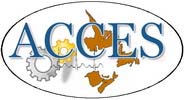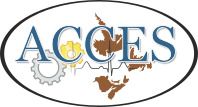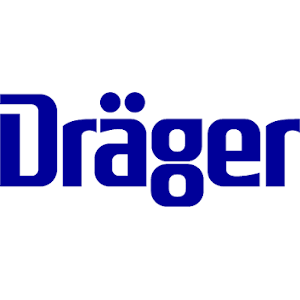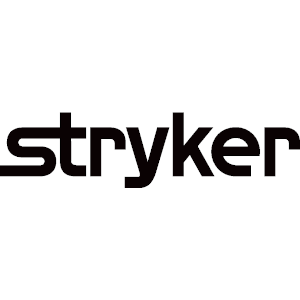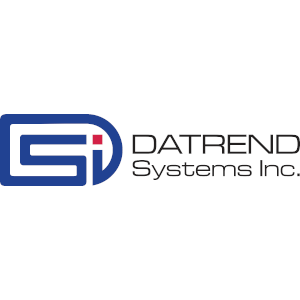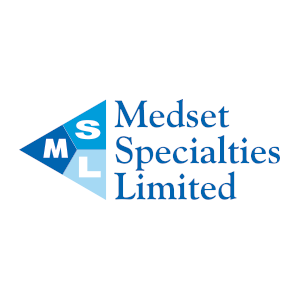Atlantic Canada Clinical Engineering Society 15th Annual Conference Delta Beauséjour Hotel, Moncton NB April 28-30, 2010 Wednesday April 28, 2010 Plenary session: A.M. Building a Safer Health System: Advancing Patient Safety for Canadians Key note Speaker: Laurel Taylor Director of Operations Canadian Patient Safety Institute Patient safety is one of the most important healthcare issues of our time. It is estimated that between 9,250 and 23,750 hospital patients die each year from a preventable adverse event. The consequences of these adverse events include prolonged length of stay in hospital, varying degrees of injury and in some instances death. The Canadian Patient Safety Institute’s (CPSI) vision defines what CPSI aspires to become, to achieve and to create. Our vision vividly captures the passion, intensity and commitment of everyone who comes in contact with the system. We envision a Canadian health system where patients, providers, government and others work together to build and advance a safer health system; where those working in the healthcare sector take pride in their ability to deliver the safest and highest quality of care possible; and, where every Canadian can be confident that the care they receive is the safest in the world. Plenary session: P.M. Evidence-Based Maintenance: How to Evaluate the Effectiveness of Your Maintenance Strategies Key note Speaker: Binseng Wang Vice President, Performance Management & Regulatory Compliance Aramark Healthcare’s Clinical Technology Services Clinical engineering (CE) professionals have been diligently performing preventive and corrective maintenance on medical equipment for over 30 years but have not systematically evaluated the effectiveness of the maintenance strategies adopted. During these three decades, equipment have proliferated drastically while healthcare resources have become more scarce, prompting many CE professionals to question whether they should reconsider their maintenance strategies. A method for evaluating maintenance effectiveness has been developed using a small set of failure codes to classify problems found in scheduled and corrective maintenance. Analysis and comparison of these failure-code results allow CE professionals to determine whether they should revise their maintenance strategies by reducing their efforts on certain tasks and increasing their attention in others. Using evidence collected to refine their strategies, CE professionals can achieve a better deployment of limited resources while enhancing patient care and reducing risks. Thursday April 29, 2010 8:45- 9:45 am Creation of a Provincial Clinical Engineering Team Guy Leger FacilicorpNB On April 1, 2010, the eight Clinical Engineering teams in the New Brunswick health system will be consolidated into one provincial team within FacilicorpNB. This presentation will go over the creation of FacilicorpNB, the progress to date as well as the transition process for the Clinical Engineering teams. 9:45 - 10:45 (Concurrent Sessions) A. O.R. Integration and Wireless Technology Ryan Jones, Stryker This session presents the emerging technologies in Minimally Invasive Surgery, Integrated Operating Rooms and Wireless Technology B. Implementing a Clinical Engineering Zone Service Model in Health Care Organization Alan Greash Aurora Health Care Director of Corporate Clinical Engineering This session will outline the process for developing an in house zone service model for the repair and maintenance of biomedical and imaging equipment. There will be tips provided on how to assess and address response time, staffing, technology, transportation, training, and space needs. This session targets in house biomedical and imaging support departments that are tasked with supporting multiple facilities over a large geographic area C. Inspecting Home Hemodialysis Sites Robert Gillis, Horizon NB This presentation will focus on some of the challenges one may face with when getting a home site set up for a Hemodialysis machine. Some of the topics of discussion during the presentation are the electrical, plumbing, and water supply of the building. The common work required to set up the hemodialysis equipment in the home, and some of the problems that one may encounter. 11:30-12:30 (Concurrent Sessions) D. Clinical Engineering Technician's Guide to Understanding and Troubleshooting Local Area Networks Pete Cumming CiscoSystems, Inc This presentation is designed for the Clinical Engineering Technician to better understand Local Area Networks and how to use a Structured Methodology to troubleshoot network connection issues. Will be discussing the basic components of a Network such as what are routers/Switches/Hubs, Ethernet, IP Addressing, Subnet Masks, Default Gateways, Domain Suffix and DNS/DHCP/WINS components and why they are needed. Will look at what are the tools available to help troubleshoot basic network connectivity issues. E. Developing to Centralized parts Management Program Alan Greash Aurora Health Care Director of Corporate Clinical Engineering Clinical engineering departments can contribute to their organization’s patient care and financial goals by effectively managing the purchase, inventory, and distribution of biomedical and imaging equipment parts. We will present a method for centralizing and managing a parts program and explain the processes, resources, and tools necessary to successfully develop it physiologic monitors! Brian K. Walsh, Children’s Hospital Boston , sponsored by Masimo Canada A presentation to understand the preventable disease of ROP and how current technology can improve those outcomes if the data is captured and presented in a format that clinicians understand and to review oxygen delivery and how adding SpHb to the equation gets us one step closer to improved patient outcomes. 2:00- 3:00 pm (Concurrent Sessions) G. Current and Future Trends in Medical Technology Speaker to be confirmed This presentation will focus on the industry’s trend not so much in diagnostic but more the technology that will influence future development of medical systems. For example, integration of systems, development of data standards, date distribution, data management, etc. H. NAVA - Neurally Adjusted Ventilatory Assist. Debie Paterson, Maquet-Dynamed A presentation on a new technology that utilizes a catheter to monitor the electrical activity of the diaphragm (Edi). Based on the patient’s neural output, NAVA responds by providing a proportionate level of ventilatory support. I. Process of purchasing and implementation of new equipment. Ihssan Bouhtiauy, Regional Health Authority 4 The technology is changing very fast. The new tests (more sensitive and more specific) are introduced on a regular basis. And the budgets are less available for new instruments. In these conditions, it is very important to make the best choice when purchasing a new equipment and as much as possible to evaluate appropriately the actual and future needs of the laboratory 3:45- 4.45 (Concurrent Sessions) J. PET Let’s talk about it Daniel Raymond, Philips Medical Systems Topics include: History, Principales and architecture, PET acquisition, Calibration, Imagae Fusion (PET CT) and Clinical Benefits K. Progress of the Electronic Health Record across Canada Pamela Doyle Canada Health Infoway This presentation will be outlining Infoway activities with partner jurisdictions moving forward with the electronic health record agenda. L. Ceiling lifts - Danger above! Ron Ouellette & Jeremy Dann Nova Scotia Association of Health Orgazization’s Clinical Engineering Service Canadian Standards and OHS reports from across the country detail a growing number of accidents and deaths associated with patient lifts. New CSA standards and manufacturers document the requirement for thorough annual inspections to mitigate the risk associated with ceiling lifts. NSAHO clinical engineering staff will review disturbing findings to date with this technology and layout suggested testing procedures and test equipment requirements. If you are not currently looking after ceilings in your department you may rethink your approach after this presentation. Friday April 30, 2010 9:00 - 10:00 (concurrent Sessions) M. Clinical Application of Medical Technologies used in Physiotherapy Denise Trzop & Andrea West This presentation will provide you with an understanding of the clinical use of electrical modalities frequently used in physiotherapy (ultrasound, TENS, muscle stimulation, laser, etc) N. UV cure Adhesives for Medical Industry Darryl Pitre Henkel Canada Corporation Topics to be addressed include: UV cure used in Bonding; Encapsulating, Coating Tacking and Sealing applications. Adhesives in general for all bonding applications will be discussed. O. 60601-1 Standard for electromedical equipment part 1 - certification requirements Scott Airdrie QPS Evaluation Services Inc A look at the certification requirements including collateral and particular standards, constructional requirements, hazards considered, Canadian and US deviations, changes in the 3rd edition, and differences from CSA 125. 10:30- 11:30 (Concurrent Sessions) P. In the Realm of Safe Medication Practice: what is possible today Steve Dennison & Catherine Kan Mckesson Canada We will show case how automation along with software and hardware support will guaranteed a better and safer hospital experience today. We will track a typical patient admission to a hospital and show case how all the technologies work together to reduce medication error. Q. Digital Mammography: Quality Control, Artifacts and Radiation Doses Cupido Daniels This presentation will focus on the differences in technical parameters and design between filmscreen and digital mammography and how that influences the type of Quality Control procedures and differences in patient radiation doses. Also, image artifacts which are unique to digital mammography will be shown and discussed. R. 60601-1 Standard for electromedical equipment part 2 - A practical look at leakage currents and earthing requirements Scott Airdrie QPS Evaluation Services Inc A look at earth leakage, enclosure leakage, patient leakage, and patient auxiliary current. Methods for measuring on different product types. Protective earthing requirements.